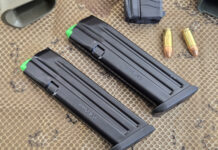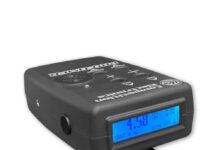
Quick Answer: Yes, you should care.
Longer Answer:
The main job of the selector spring is to give the selector detent the correct amount of tension to pop into each divot within the actual selector. Essentially allowing the selector to both move and seat.
The selector spring has a tendency to bend and break over time. It can also be bent during an install that has a lack of knowledge or care. Just like most things on the AR, the spring can can corrode and rust as well.
A bent selector spring can cause the selector to essentially bind up, causing it to be harder to move. The worst case scenario? And it has been seen..the selector spring breaks in two. If the selector spring breaks in half there will be no tension on the selector and nothing to stop the selector from just freely spinning. Almost as if you installed the pistol grip and firing group without the spring, and we have all done it…
Another super weird and rare occasion, the broken spring can wiggle it’s way past the detent and fall into your trigger group, locking everything up. (sounds impossible I know)
So how do you ensure that this doesn’t happen?
Proper Install
The selector spring is placed inside a hole inside the pistol grip and the selector detent is placed into the receiver with pointed tip towards the selector. To install the selector spring place the selector on semi and hold it there. Ensure that you don’t bend the selector spring as you are tightening the pistol grip on. To do this, place the pistol grip with the spring inside onto the receiver. While watching the spring ensure that it is straight up and down and lined up with the detent hole, then press down on the grip to close the gap between the receiver and the grip. Then tighten the grip screw.
A lot of people like to tighten the grip screw without pushing the grip entirely down first. Basically tightening the grip does as the screw is being tightened. This way isn’t the best method because it is more likely that the spring will bend as you are tightening.
Pro Tip: Placing the screw into the hole inside the grip before installing the grip helps.

Proper Care
Putting a lubricant onto the spring and detent before install helps with three things. One, it acts as a glue to keep the detent in place in teh receiver ensuring it doesn’t fall out as you are installing everything. Two, it actually helps with the movement of your selector. Remember, lube the friction points. That detent seating inside the selector holes is a friction point, putting a bit of lube between those surfaces will help the selector move easier and more crisp. Three, prevents rust.
The types of lube we used in the Army for this? LSA-T or CLP. LSA-T is a type of white lubricant and the Teflon makes it almost a greasy substance. This will keep it intact. For a quick fix, throw some CLP down the detent and selector spring hole.

Annual Checks
In the Army we had to do annual checks on each weapon. This included both gauging and servicing. During the service portion we would loosen the pistol grip to check to make sure that the selector spring isn’t bent and that is isn’t rusted. If it was rusted we would either replace it or just throw some CLP or LSA-T on. If it was bent we would replace. It takes 30 seconds and can prevent your gun going down.



